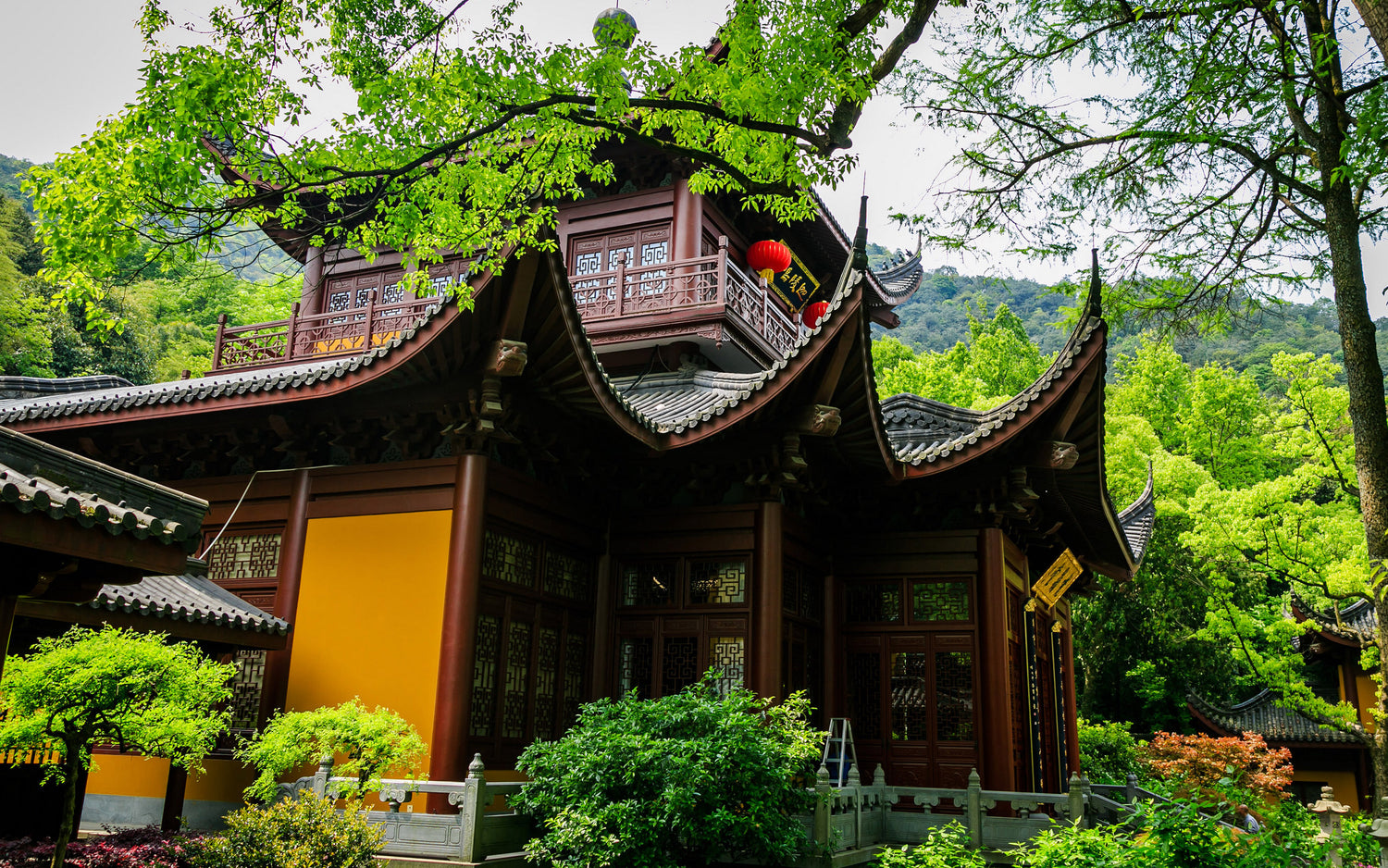
Holy mountains or temples where your items come from
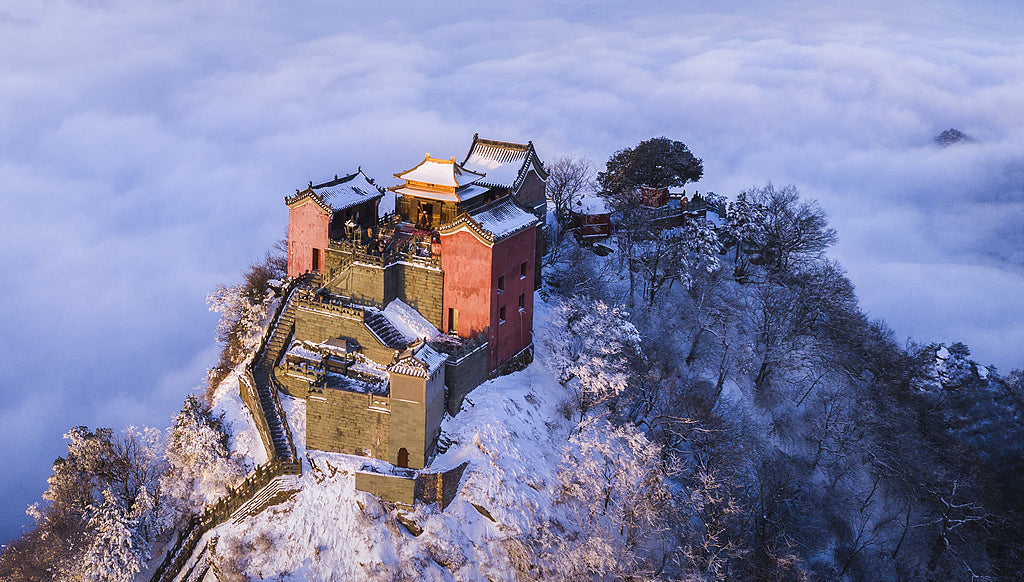
Mount WuDang
Wudang Mountain, located in Danjiangkou City, Hubei Province, is a sacred site of Taoism, historically known as "Taiyue" and "Xuanyue". Its main peak, Tianzhu Peak, rises to 1,612 meters. Since the Ming Dynasty, when it was given the titles of Dayue (Great Mountain) and Zhi Shi Xuan Yue (Mystical Mountain that Rules the World), its status has surpassed that of China's Five Great Mountains, earning it the epithets Crown of the Five Peaks and First Immortal Mountain Under the Heavens. As a UNESCO World Heritage Site, Wudang is famous for its spectacular natural scenery, especially the "72 Peaks Paying Tribute to the Summit", and its magnificent Ming-era royal Taoist architectural complex, which comprises 129 ancient structures, including the Golden Hall and Zixiao Palace. This reflects the historical saying, "While the Forbidden City was built in the north, Wudang was erected in the south".
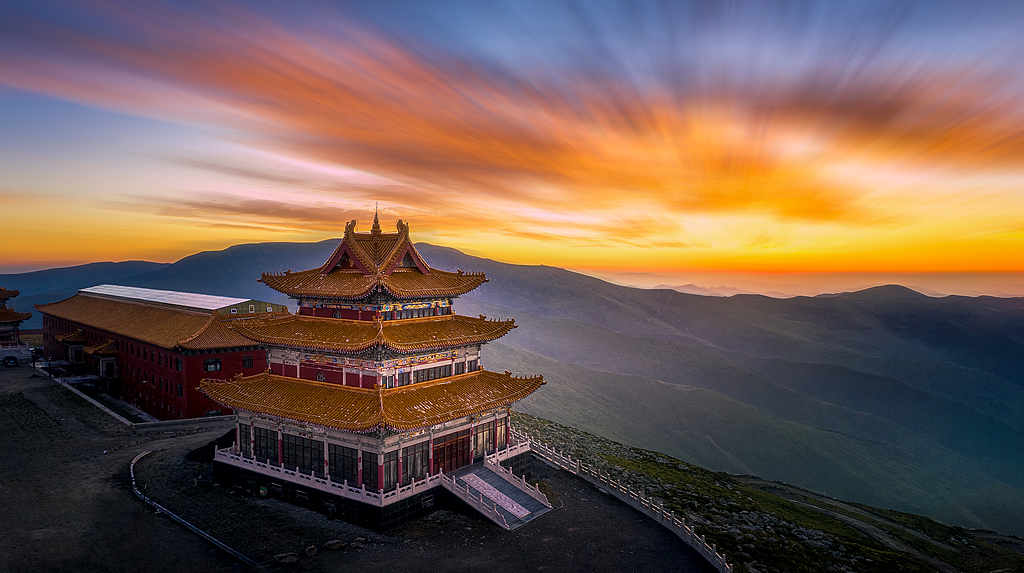
Mount WuTai
As the Bodhimanda of Manjusri Bodhisattva, Mount Wutai has been the site of Buddhist activities since 68 CE. It preserves 86 ancient temples, including iconic complexes such as Xiantong Temple and Tayuan Temple, with the Tang Dynasty East Hall of Foguang Temple showcasing China's oldest wooden architecture. The site harmonizes Han and Tibetan Buddhist traditions and attracts millions of pilgrims each year. Devotees make the "Great Pilgrimage" - a 50-kilometer clockwise trek over all five peaks to honor Manjusri's manifestations - or the simplified "Little Pilgrimage" to Dailuo Peak, seeking wisdom and spiritual liberation.
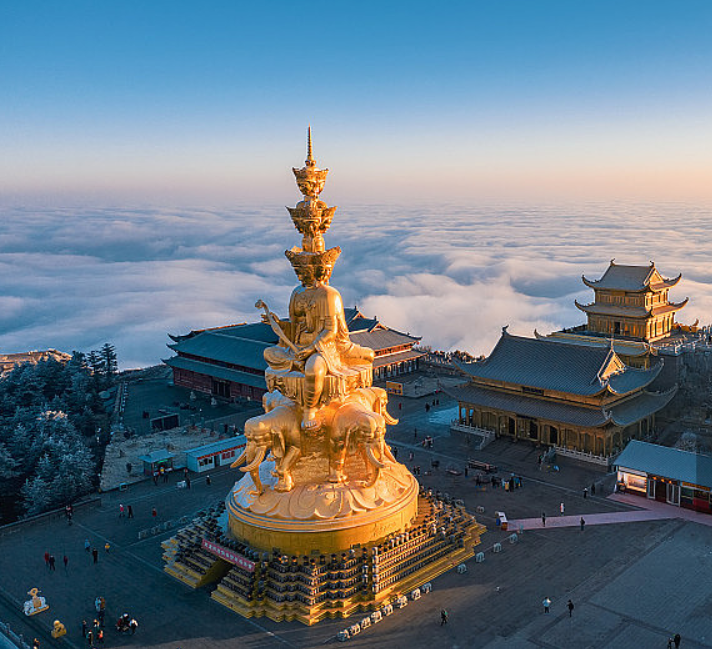
Mount Emei
Mount Emei, located in Leshan, Sichuan Province, is one of China's Four Sacred Buddhist Mountains and the bodhimanda of Samantabhadra Bodhisattva. Designated a UNESCO World Heritage site in 1996 for both cultural and natural significance, its highest peak, Wanfoding, rises 3,099 meters. Known as "the most elegant mountain under heaven," its name derives from poetic descriptions of "cloud-woven emerald brows." The mountain's geological history traces back 850 million years to the Yangtze Platform, featuring fault-block structures and glacial relics.
A sacred Buddhist site since the Eastern Han Dynasty, Emei preserves over 30 temples. Key landmarks include Baoguo Temple, the Song-era bronze statue of Samantabhadra at Wannian Temple, and the 48-meter golden statue at Huazang Temple on Golden Summit, where "Buddha's Halo" and "Sacred Lamps" phenomena occur in sea of clouds. Blending Taoism, Buddhism, and nature worship, its legends span from the Yellow Emperor's visit to Jiulao Cave to White Snake's cultivation at Bailong Cave.
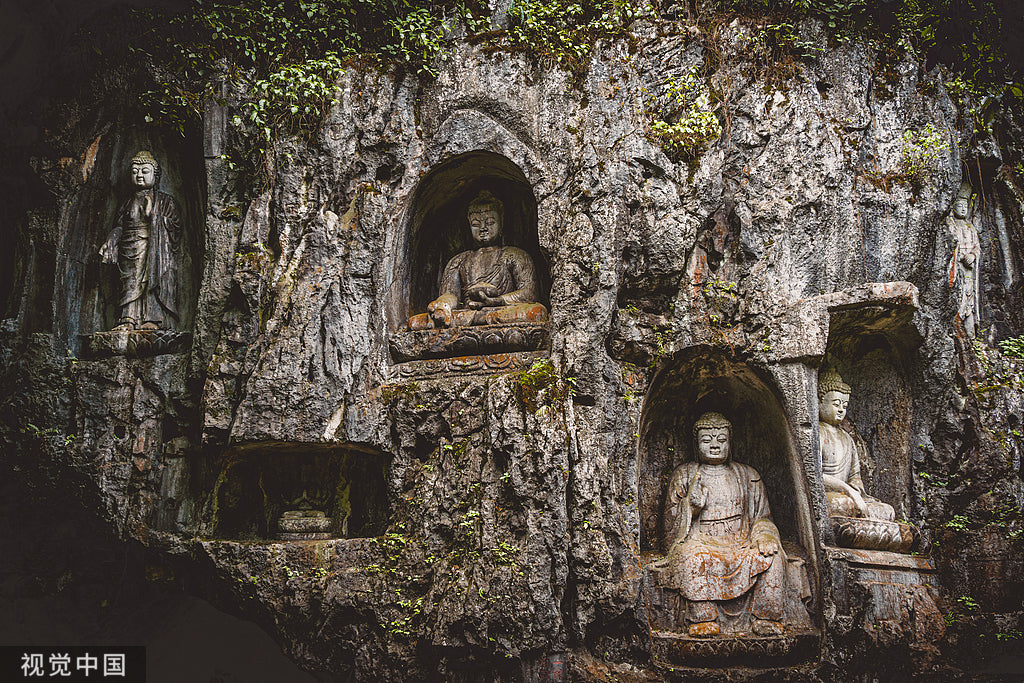
LingYin Temple
Lingyin Temple, nestled at the northwest foot of West Lake in Hangzhou, was founded in 326 CE during the Eastern Jin Dynasty. As the foremost of Jiangnan's Five Great Zen Temples, its name derives from Indian monk Huili's exclamation upon seeing Feilai Peak: "This is a miniature of Vulture Peak from Central India!" The 87,000㎡ complex features five terraced halls: the Hall of Heavenly Kings displays Emperor Kangxi's inscribed plaque "Cloud Forest Zen Monastery"; the Grand Hall enshrines a 24.8-meter-tall camphorwood statue of Sakyamuni carved in the Southern Song Dynasty; and Tang Dynasty "Flying Apsaras" reliefs adorn the Medicine Buddha Hall. The adjacent Feilai Peak preserves 345 Buddhist statues from Five Dynasties to Yuan periods, including the largest stone Maitreya Buddha in southern China.
